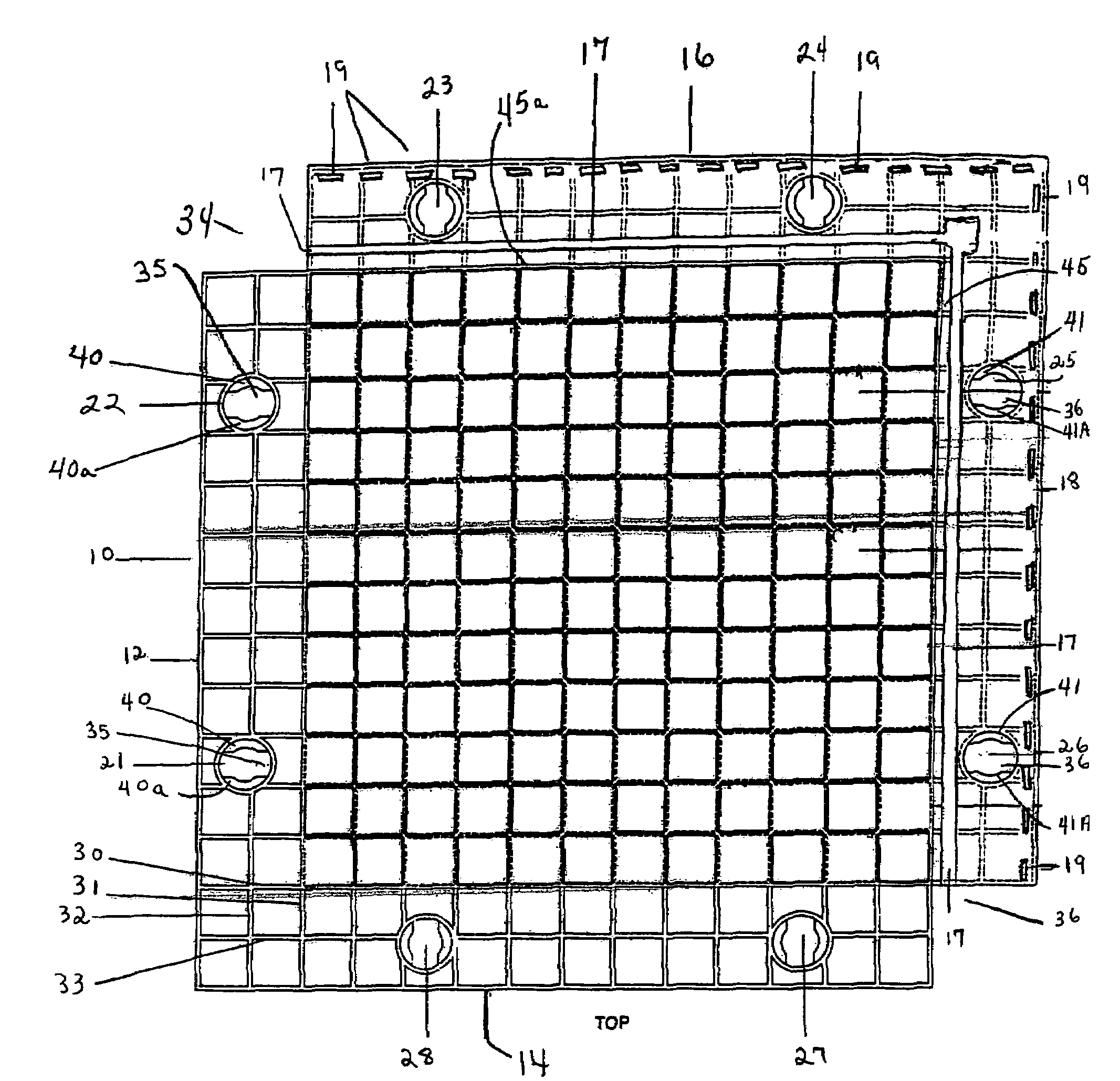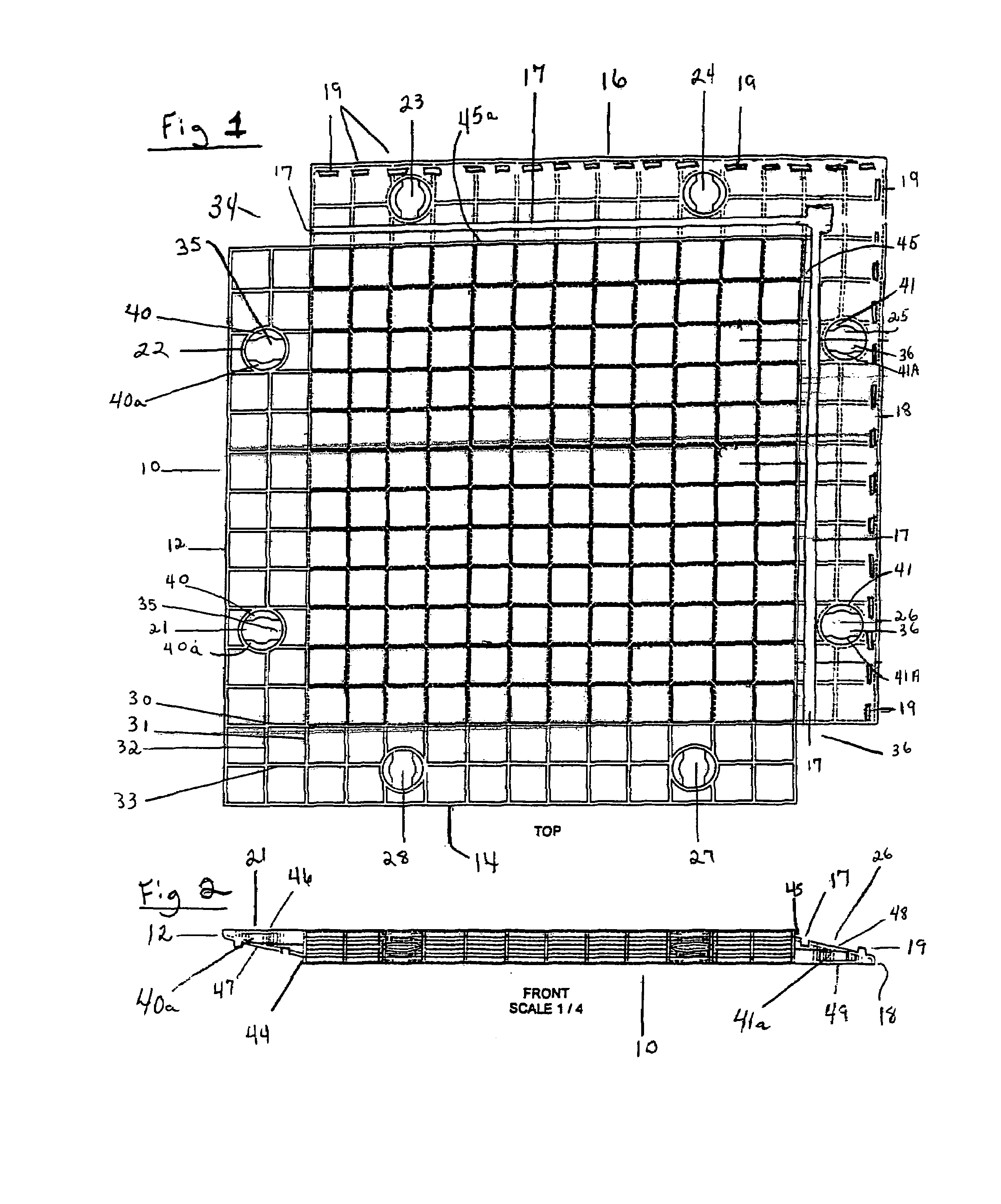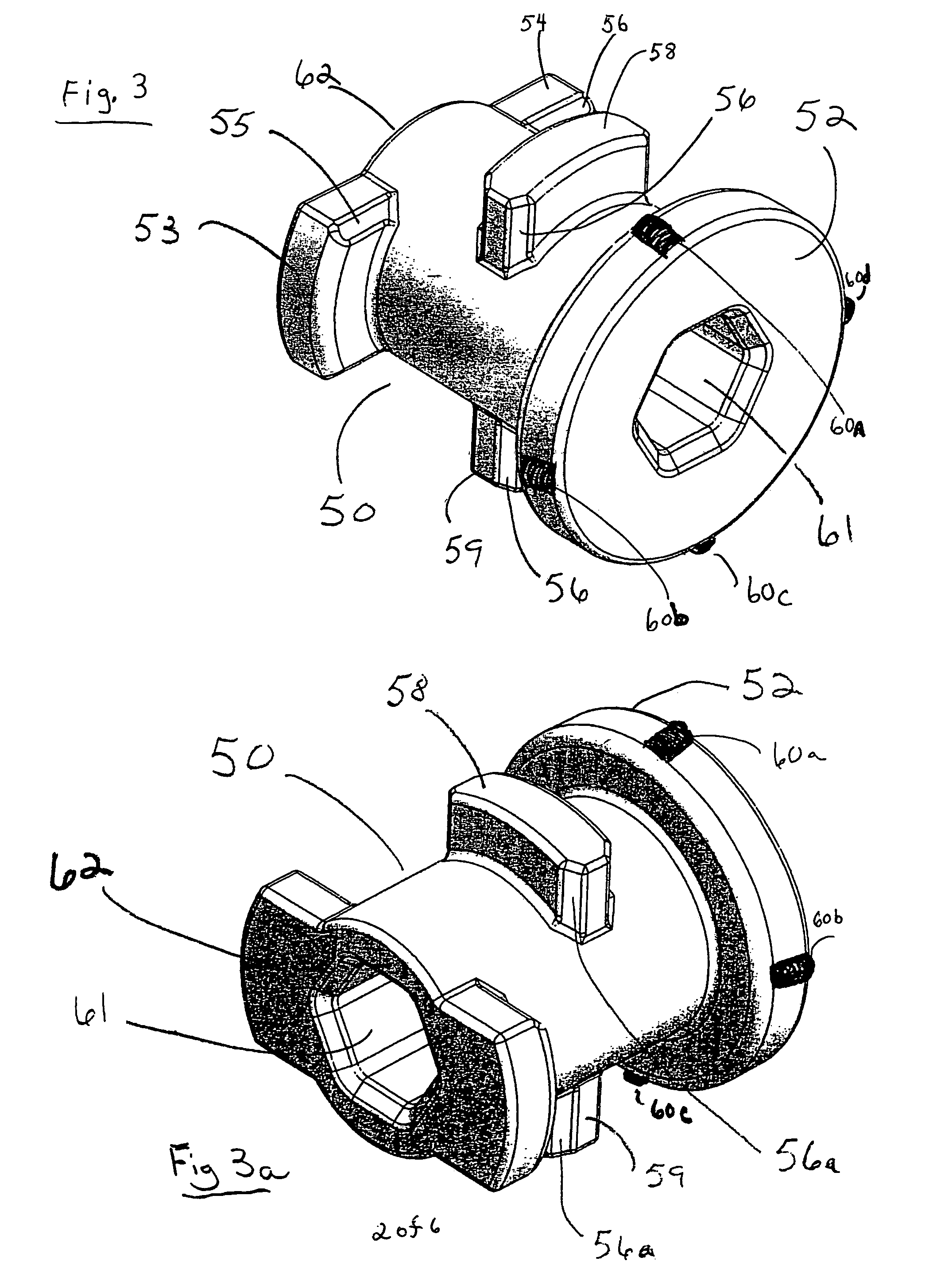Interlocking mat
a technology of interlocking mats and locking devices, which is applied in the direction of screws, threaded fasteners, and ways. it can solve the problems of hazard to personnel and vehicles using the mats, the use of separately installed locking devices complicating the installation process, and the lock device can be lost or work its way out of the mat, so as to achieve the effect of optimum strength, convenient pin turning, and material saving benefits
- Summary
- Abstract
- Description
- Claims
- Application Information
AI Technical Summary
Benefits of technology
Problems solved by technology
Method used
Image
Examples
Embodiment Construction
[0032]The present invention relates to an improved temporary load bearing structure having a collection of rigid mats with overlapping recessed lips to be fitted together to form a continuous flat interlocking load bearing surface. In FIG. 1, each mat 10 is made of rigid material preferably rigid polymeric plastic materials, rubber or any other moldable and / or castable material. The mat preferably is sized approximately 4′×4′ in length and width, approximately 2½ to 3 inches in height and weighs approximately 50 lbs to 60 lbs. Mat 10 is preferably made from well-known one piece injection molding manufacturing process and is shown with an interior cellular structure formed by vertical walls within the mat with the walls of one cell indicated by 30, 30a, 30b and 30c. The interior of mat 10 can be of solid construction or separate inserts of material can fill some or all the cells for greater load bearing strength. The insert material can be any compatible material and is preferably th...
PUM
| Property | Measurement | Unit |
|---|---|---|
| height | aaaaa | aaaaa |
| angle | aaaaa | aaaaa |
| perimeter | aaaaa | aaaaa |
Abstract
Description
Claims
Application Information
 Login to View More
Login to View More - R&D
- Intellectual Property
- Life Sciences
- Materials
- Tech Scout
- Unparalleled Data Quality
- Higher Quality Content
- 60% Fewer Hallucinations
Browse by: Latest US Patents, China's latest patents, Technical Efficacy Thesaurus, Application Domain, Technology Topic, Popular Technical Reports.
© 2025 PatSnap. All rights reserved.Legal|Privacy policy|Modern Slavery Act Transparency Statement|Sitemap|About US| Contact US: help@patsnap.com



